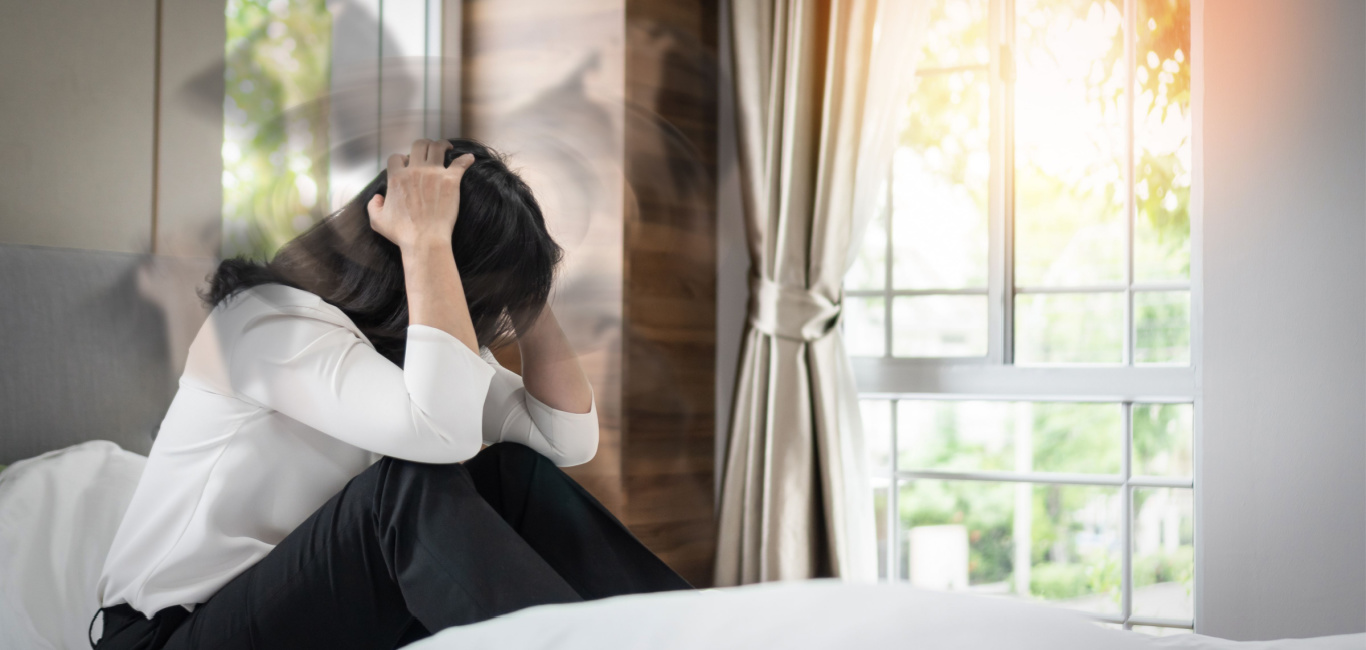
Vestibular migraines, also known as migrainous vertigo, are a subtype of migraine characterised by dizziness, imbalance, and vestibular system disturbances. Unlike other migraines, vestibular migraines do not always manifest as a throbbing headache.
“This type of migraine primarily affects the body’s balance and spatial orientation, resulting in a distinct set of symptoms,” says Dr Keni Ravish Rajiv, consultant neurologist and epileptologist, Aster CMI Hospital, Bengaluru.
During an episode, an individual frequently feels as if being on a never-ending roller coaster. “The world appears to spin, causing severe disorientation and difficulty with daily activities,” he says.
Spins and squeezes
In 2021, Dikshita Talukdar, 36, marketing manager from Mumbai, found herself trapped in a disorienting cycle of headaches and dizziness that disrupted her daily life. She says, “The headaches were like someone squeezing my head, and the dizziness [felt as if] that the ground was constantly shifting beneath me. It was overwhelming.”
During some of these episodes, she also experienced dizziness, particularly when moving her head or when certain triggers were present.
According to Dr Rajiv, the vestibular system is in charge of the body’s balance and spatial orientation. When this system is disrupted, it can lead to vestibular migraines. While the exact connection between these phenomena remains unclear, it is thought to involve intricate processes in the brain including changes in blood flow, neurotransmitter activity and sensory processing.
Symptoms of vestibular migraine
These are the symptoms of vestibular migraine according to Dr Ria Emmanuel, ear, nose and throat (ENT) consultant at Narayana Multispeciality Hospital, Bengaluru, who has specialised in allergy and immunotherapy:
- Vertigo, an intense spinning sensation
- Nausea
- Vomiting
“The symptoms can last from a few seconds to several hours and are frequently accompanied by photophobia (sensitivity to or intolerance of light) and phonophobia (sensitivity to sound),” explains Dr Rajiv.
In addition to the core symptoms, some people with vestibular migraines may experience visual disturbances, such as visual aura, which can complicate the condition even more.
Causes and triggers
Dr Rajiv states that the exact causes of vestibular migraines are unknown, but they believe genetics, hormonal fluctuations, and environmental factors play a role.
Identifying and avoiding triggers is an important part of dealing with vestibular migraines. Some common triggers are stress, hormonal changes, certain foods (e.g. aged cheeses and processed meats) and a lack of sleep.
“The episodes can be severely incapacitating. The unpredictable nature of episodes can disrupt work, social life, and even the most basic daily tasks such as walking or driving,” says Dr Emmanuel.
Diagnosis of vestibular migraine
According to Dr Emmanuel, vestibular migraine is diagnosed using these methods:
- A thorough medical history can identify migraine-related symptoms, including headache patterns, associated triggers and vestibular symptoms.
- The International Classification of Headache Disorders (ICHD) provides specific criteria for diagnosing vestibular migraine; they include a history of migraines and recurrent vestibular symptoms.
- Magnetic resonance imaging can help rule out other potential causes of vestibular symptoms.
Because vestibular migraines overlap with other conditions such as Meniere’s disease and benign paroxysmal positional vertigo (BPPV), diagnosing them can be difficult. “A thorough evaluation by an expert, including a detailed medical history and specialised tests, is essential for a correct diagnosis,” says Dr Rajiv.
Treatment of vestibular migraines
While there is no reversal of the condition, there are several treatment options to alleviate symptoms and reduce the frequency of episodes.
Among them are lifestyle changes, medication, vestibular rehabilitation therapy and stress management techniques. Dr Emmanuel lists a few options:
- Identifying and avoiding triggers, such as certain foods, stress, lack of sleep, or specific environmental factors
- Avoiding known trigger foods and beverages, such as caffeine, alcohol, aged cheeses, and artificial sweeteners
- Establishing a regular sleep schedule and managing stress through relaxation techniques, meditation, or yoga
- Vestibular rehabilitation therapy or VRT involves exercises that improve balance and reduce dizziness by stimulating and retraining the vestibular system.
Additionally, Dr Emmanuel suggests trying an alternative therapy such as acupuncture, but only after consulting a doctor. It might provide symptom relief for some individuals, although further research is necessary to conclusively establish its effectiveness.
Dikshita Talukdar consulted an expert for her condition. The doctor asked her to provide a detailed medical history and describe her symptoms in depth. She received a vestibular migraine diagnosis.
Lifestyle modifications were the first step — structuring her sleep patterns, managing stress through relaxation techniques and introducing regular exercise, says Talukdar.
Talukdar’s doctor prescribed her medicines to mitigate the frequency and severity of her migraines. Simultaneously, she began vestibular rehabilitation — a tailored exercise regimen designed to enhance her balance and reduce dizziness.
Prevention helps
Individuals can take precautions to avoid or reduce the frequency of vestibular migraine attacks. Dr Emmanuel suggests strategies such as maintaining a headache diary to identify triggers, managing stress, adhering to a regular sleep schedule, and staying hydrated.
Talukdar says, “Keeping the migraine diary gave me a sense of control. It allowed me to spot patterns and understand what might be triggering my migraines.”
Years into her treatment, the benefits became evident and the frequency and intensity of her migraine episodes decreased significantly.
Talukdar says, “It has been a journey, but I feel I’m getting my life back. I’m no longer held captive by the fear of the next migraine. There’s hope, and that’s something I didn’t have before.”

















